Dangerous (Michael Jackson album), released on November 26, 1991, stands as Jackson’s eighth studio album. Coming more than four years after his hugely successful album “Bad,” “Dangerous” marked a significant phase in his career. This album was not just another addition to his discography; it represented a bold departure from his previous work, showcasing his versatility and willingness to experiment with new sounds and themes. The timing of the release was pivotal, situating Jackson at a moment when the music industry was transitioning into more digitized production techniques, which he embraced to craft a contemporary sound that resonated with a new era of listeners.
“Dangerous” was also Jackson’s first album since “Forever, Michael” (1975) not produced by Quincy Jones, who had been his mentor and collaborator on his previous three mega-hit records. This change underscored Jackson’s desire for creative independence and a more hands-on approach in the production process. The album ventured into uncharted territories of the musical landscape, blending R&B, pop, and the emerging new jack swing genre, and it addressed complex social issues through its lyrics.
The release of “Dangerous” was a cultural event; it was eagerly anticipated by fans and critics alike, setting sales records and reaffirming Jackson’s star power. The album’s success continued to cement Jackson’s reputation not only as a musical icon but also as a trailblazer who continually pushed the boundaries of what pop music could achieve.
| Attribute | Details |
|---|---|
| Album Name | Dangerous |
| Release Date | November 26, 1991 |
| Studio Album Number | Eighth |
| Significance | Marked a significant phase; a departure from previous work; showcased versatility and willingness to experiment with new sounds and themes. |
| Production Change | First album not produced by Quincy Jones since “Forever, Michael” (1975); signified a desire for creative independence. |
| Music Style | Blend of R&B, pop, and new jack swing. |
| Themes | Addressed complex social issues through lyrics. |
| Cultural Impact | Eagerly anticipated; set sales records; reaffirmed Jackson’s star power as a musical icon and trailblazer. |
Contents
Background
After the monumental success of “Bad” in 1987, Michael Jackson was not only basking in the glow of global stardom but also grappling with the expectations set by his own previous achievements. “Bad” had solidified his reputation as a pop powerhouse, but Jackson was keen to evolve and assert more control over his musical direction. This period marked a pivotal shift as Jackson aimed for greater creative independence, which he believed was essential to his artistic growth.
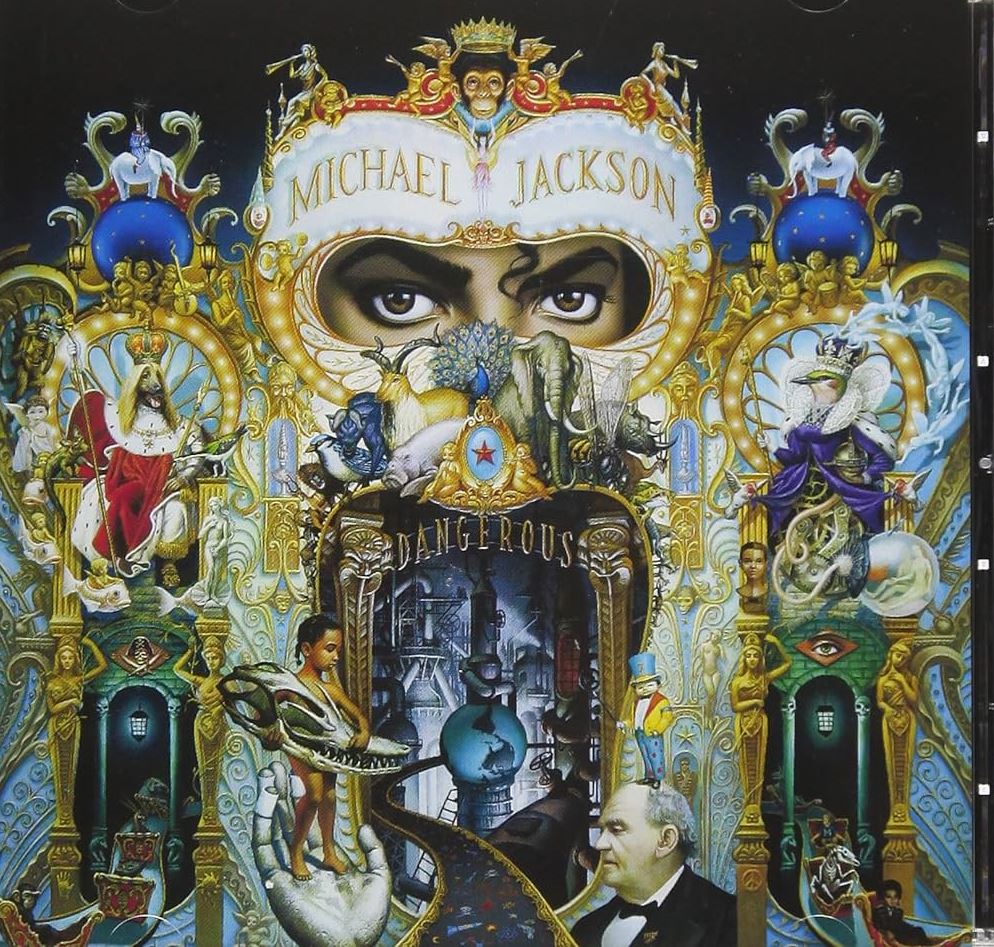
The initial concept after “Bad” was a greatest-hits album titled “Decade,” which would have been a compilation of his hits with a few new tracks, somewhat mirroring Madonna’s approach with “The Immaculate Collection.” However, by early 1989, Jackson’s vision had expanded, and he felt compelled to produce a full album of new material, leading to the abandonment of the “Decade” project. This decision set the stage for what would eventually become “Dangerous.”
A significant part of this transition was Jackson’s decision to part ways with Quincy Jones, who had produced his last three albums. While their collaboration had been immensely successful, Jackson wanted to explore new musical landscapes and production techniques without being overshadowed by Jones’ influence. This led him to work with a new set of producers who were pivotal in the creation of “Dangerous.”
| Attribute | Details |
|---|---|
| Post-“Bad” Period | Following the success of “Bad” in 1987, Jackson was seeking to evolve and assert more control over his musical direction for artistic growth. |
| Initial Project | A greatest-hits album titled “Decade,” intended as a compilation of hits with a few new tracks, similar to Madonna’s “The Immaculate Collection.” |
| Change in Plan | By early 1989, Jackson expanded his vision, deciding to produce a full album of new material, leading to the abandonment of the “Decade” project. |
| New Album | This decision and shift in vision led to the creation of “Dangerous.” |
| Production Change | Jackson parted ways with Quincy Jones, seeking new producers to explore new musical landscapes and production techniques for “Dangerous.” |
Recording Process
The recording of “Dangerous” began in earnest in late 1989 and continued for nearly two years, a testament to Jackson’s perfectionist approach. The primary recording took place at Ocean Way Record One in Sherman Oaks, California, where Jackson could work without interruption, often renting the studio for extended periods for up to $4,000 a day.
Jackson’s team for “Dangerous” included Teddy Riley, who was brought on board to infuse the album with the emerging new jack swing genre, Bill Bottrell, and Bruce Swedien, who had been a long-time engineer for Jackson. Each producer brought a unique element to the album, with Riley introducing cutting-edge rhythms and production techniques that marked a significant departure from Jackson’s earlier work.
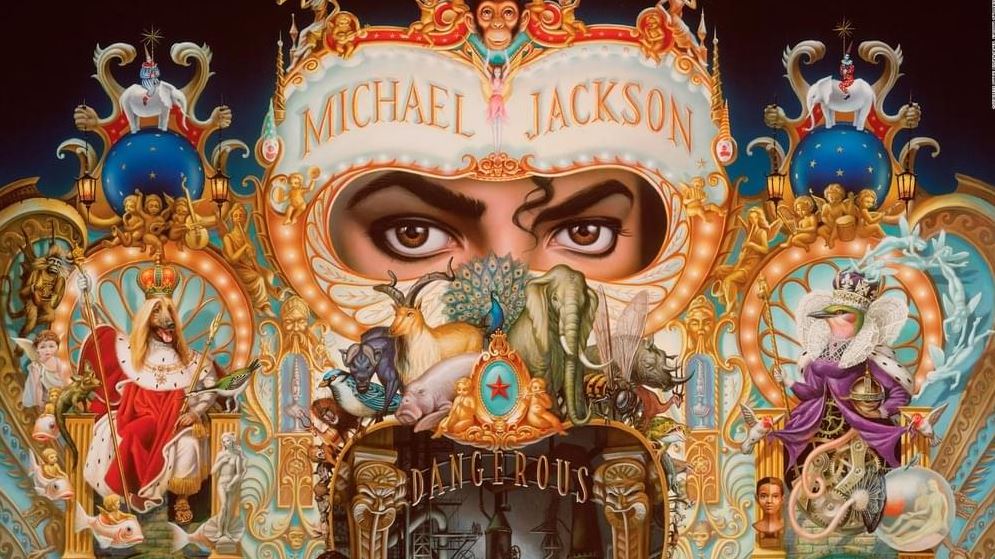
One of the notable anecdotes from the recording sessions involves the track “Black or White.” Bottrell was instrumental in the creation of this song, contributing not only as a producer but also by writing and performing the rap section under the pseudonym “L.T.B.” This track exemplified Jackson’s new sound and his desire to address themes of racial harmony and unity.
Jackson also collaborated with other artists and technicians to bring a fresh perspective to his music. Guitarist Slash from Guns N’ Roses was brought in for the track “Give In to Me,” adding a rock edge that contrasted with the album’s predominantly pop and R&B feel. Moreover, Jackson’s work with Brad Buxer, a classically trained keyboardist and technician, spanned several tracks, showcasing their strong creative chemistry.
The recording process was marked by long hours and a relentless pursuit of perfection. Sessions could last up to 18 hours a day, with Jackson and his team experimenting with sounds and production techniques to achieve the desired effect. The use of unconventional sounds, such as honking vehicle horns, breaking glass, and clanking metal, added an urban, gritty feel to the album.
In one instance, recording the vocals for “Keep the Faith” became a marathon session, with Swedien insisting Jackson not leave the studio until the vocals were perfected. This dedication to craft and willingness to push boundaries were hallmarks of the recording sessions for “Dangerous,” reflecting Jackson’s evolution as an artist and his desire to challenge both himself and the expectations of his audience.
| Aspect | Details |
|---|---|
| Recording Timeline | Began in late 1989 and continued for nearly two years, highlighting Jackson’s perfectionist approach. |
| Primary Recording Location | Ocean Way Record One in Sherman Oaks, California, often rented for up to $4,000 a day. |
| Key Contributors | Teddy Riley, Bill Bottrell, Bruce Swedien. Riley brought new jack swing influences; Bottrell contributed to “Black or White,” including the rap section. |
| Notable Collaborations | Guitarist Slash on “Give In to Me” and Brad Buxer on several tracks, adding diverse musical elements to the album. |
| Production Techniques | Experimentation with unconventional sounds like honking horns, breaking glass, and clanking metal; intense and lengthy recording sessions up to 18 hours a day. |
| Production Challenges | Intense sessions for “Keep the Faith,” with Swedien insisting on perfection before ending sessions, demonstrating Jackson’s dedication to craft and innovation. |
Musical Composition
Michael Jackson’s “Dangerous” is a rich tapestry of genres, blending traditional pop with R&B, new jack swing, and elements of gospel, rock, and industrial music. This mix not only showcased Jackson’s versatility but also reflected the shifting dynamics of early ’90s pop music. The involvement of producer Teddy Riley was particularly significant, as he was instrumental in shaping the sound of new jack swing, a genre that merged the rhythms of hip-hop with the harmonies of R&B.
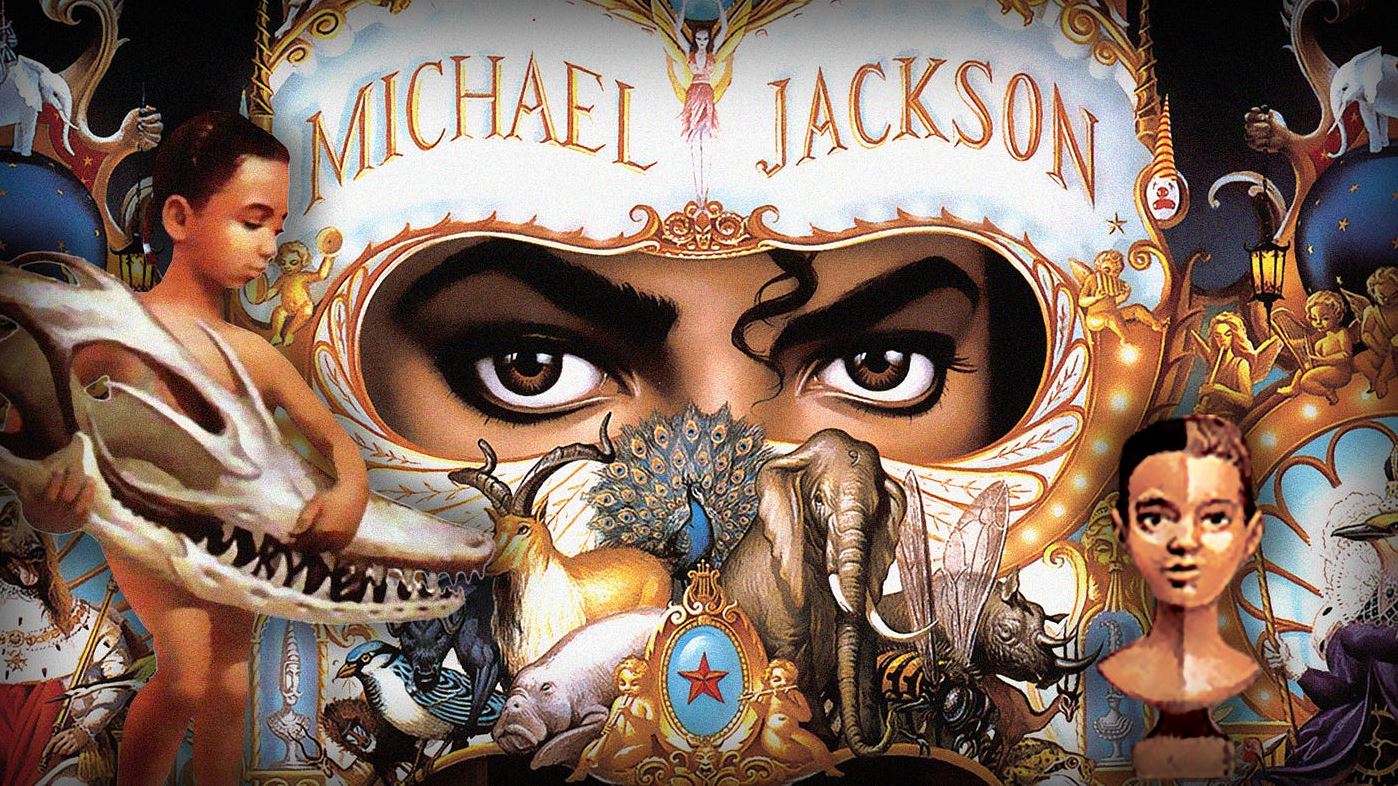
“Dangerous” opens with “Jam,” a track that features heavy basketball and street sounds mixed with a rapid, funky beat, symbolizing the album’s energetic and assertive style. “Remember the Time,” another standout track, delves into the themes of nostalgia and lost love, set against a backdrop of an ancient Egyptian motif in its popular music video. This song, along with others like “In the Closet,” which blends sensuality with a deep, driving beat, showcases Jackson’s ability to blend personal and romantic narratives with compelling musical innovation.
The album also takes a serious tone in addressing global and social issues. “Heal the World” and “Black or White” reflect Jackson’s interest in promoting racial harmony and environmental awareness. These themes are complemented by the music’s expansive feel, incorporating lush orchestral arrangements and global musical influences that enhance the songs’ universal messages.
| Feature | Details |
|---|---|
| Genre Blend | Combines pop, R&B, new jack swing, gospel, rock, and industrial music, showcasing Jackson’s versatility and reflecting early ’90s pop music dynamics. |
| Key Producer | Teddy Riley, instrumental in shaping the new jack swing genre, significantly influenced the album’s sound. |
| Opening Track | “Jam” features basketball and street sounds with a rapid, funky beat, setting an energetic and assertive tone for the album. |
| Standout Tracks | “Remember the Time” explores themes of nostalgia and lost love; “In the Closet” combines sensuality with a deep, driving beat. |
| Social Themes | “Heal the World” and “Black or White” address global issues like racial harmony and environmental awareness. |
| Musical Elements | Incorporates orchestral arrangements and global influences, enhancing the universal appeal of the themes discussed in the album. |
Release and Reception
“Dangerous” was released on November 26, 1991, amid high anticipation. Jackson’s approach to the album’s promotion was innovative, featuring a combination of television specials, strategic appearances, and groundbreaking music videos. The premiere of the “Black or White” video was a global event; aired simultaneously in 27 countries to an audience of 500 million, it featured groundbreaking morphing technology and a controversial ending that sparked discussions about race and identity.
Critically, “Dangerous” was well-received, with many praising its bold artistic direction and the integration of contemporary musical trends. The album debuted at number one on the Billboard 200 chart and achieved similar success internationally, hitting the top spot in multiple countries. It quickly became the best-selling record worldwide in 1992, bolstered by a string of successful singles that dominated the charts.

The influence of “Dangerous” was not confined to commercial metrics; it also had a significant cultural impact. Songs like “Black or White” and “Heal the World” became anthems for a generation concerned with social issues and equality, demonstrating how pop music could be used as a platform for serious discourse.
| Aspect | Details |
|---|---|
| Release Date | November 26, 1991 |
| Promotional Strategy | Innovative approach with TV specials, strategic appearances, and groundbreaking music videos. The “Black or White” video premiere was a global event, viewed by 500 million people across 27 countries. |
| Critical Reception | Well-received for its bold artistic direction and integration of contemporary musical trends. |
| Commercial Success | Debuted at number one on the Billboard 200 and achieved international success. Became the best-selling record worldwide in 1992 with several chart-topping singles. |
| Cultural Impact | Songs like “Black or White” and “Heal the World” addressed social issues and equality, showcasing pop music as a platform for serious discourse and becoming anthems for social change. |
Dangerous World Tour
To further promote the album, Jackson embarked on the “Dangerous World Tour” beginning in June 1992. This tour was notable not only for its theatricality and scale but also for its philanthropic angle; Jackson donated the proceeds from the tour to various charities, including his own Heal the World Foundation. The tour played a crucial role in amplifying the album’s message and proving Jackson’s prowess as a live performer.
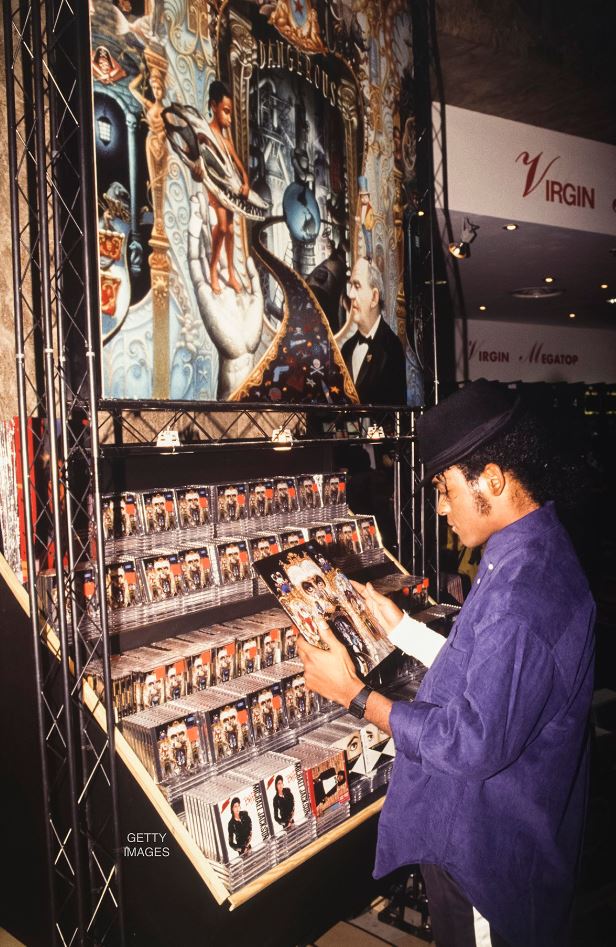
The tour was marked by its innovative stage design and the use of cutting-edge technology, including video screens and special effects that enhanced the concert experience. Jackson’s performances were a spectacle of dance and music, featuring high-energy choreography and a setlist that mixed newer songs from “Dangerous” with his classic hits.
Despite challenges, including health issues and allegations of personal misconduct that emerged during the latter part of the tour, the “Dangerous World Tour” was a monumental success. It not only boosted album sales but also solidified Michael Jackson’s status as one of the premier entertainers of his time. The tour’s impact extended beyond the music, as it raised millions for charitable causes and brought attention to global issues through its association with Jackson’s humanitarian efforts.
| Aspect | Details |
|---|---|
| Tour Start Date | June 1992 |
| Tour Characteristics | Theatrical, large-scale with a philanthropic focus. Proceeds were donated to various charities, including Jackson’s own Heal the World Foundation. |
| Stage Design and Technology | Innovative design with cutting-edge technology, including video screens and special effects to enhance the concert experience. |
| Performance Highlights | Featured high-energy choreography and a mix of songs from “Dangerous” along with classic hits. |
| Challenges | Faced health issues and allegations of personal misconduct, which emerged during the latter part of the tour. |
| Impact of the Tour | Boosted album sales, solidified Jackson’s status as a premier entertainer, raised millions for charity, and brought attention to global issues through humanitarian efforts. |
Singles and Key Tracks
The album “Dangerous” showcased a variety of singles that not only achieved significant commercial success but also left a lasting impact on music and pop culture. The lead single, “Black or White,” was released in November 1991 and quickly rose to the top of the Billboard Hot 100 chart, where it remained for seven consecutive weeks. This track was celebrated for its innovative blend of rock and pop sounds, and its accompanying music video, featuring groundbreaking morphing technology, played a significant role in its popularity. The song’s message of racial unity resonated globally, making it a powerful anthem for equality.
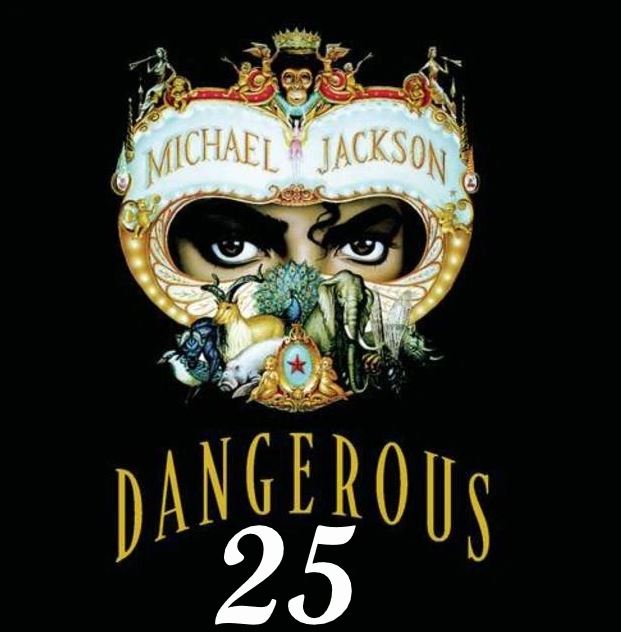
“Remember the Time” was another major hit from the album, with its rich R&B influences and memorable music video set in ancient Egypt, starring Eddie Murphy and Iman. This track peaked at number three on the Billboard Hot 100 and was notable for its lush production and engaging storyline, which helped cement Jackson’s reputation as not only a music icon but also a formidable storyteller.
“Heal the World,” released as the fifth single from the album, offered a softer, more introspective look at global issues like children’s welfare and world peace. It reached the top 10 in many countries, and its humanitarian message was emphasized through Jackson’s own Heal the World Foundation, which aimed to improve the lives of children across the globe.
These singles exemplified Jackson’s ability to merge sharp musical production with socially and culturally relevant themes, influencing trends in music that moved beyond mere entertainment to embrace broader societal messages.
| Single | Release | Billboard Hot 100 Peak | Features | Impact |
|---|---|---|---|---|
| Black or White | November 1991 | #1 for seven consecutive weeks | Innovative blend of rock and pop, groundbreaking morphing technology in the music video. | Global anthem for racial unity, significantly impacted music and pop culture. |
| Remember the Time | — | #3 | Rich R&B influences, music video set in ancient Egypt featuring Eddie Murphy and Iman. | Enhanced Jackson’s reputation as a music icon and storyteller. |
| Heal the World | — | Top 10 in many countries | Softer, introspective track focusing on global issues like children’s welfare and world peace. | Emphasized humanitarian messages through the Heal the World Foundation. |
Awards and Achievements
“Dangerous” was not only a commercial triumph but also a critical success, garnering accolades and affirming Michael Jackson’s status in the music industry. At the 1993 Grammy Awards, the album earned several nominations, including Best Pop Vocal Performance for “Black or White” and Best R&B Vocal Performance for “Jam.” The album’s engineering team won Best Engineered Album, Non-Classical, highlighting the technical excellence that went into its production.
The album achieved remarkable sales milestones, reinforcing Jackson’s legacy as a global superstar. “Dangerous” sold over 32 million copies worldwide, making it one of the best-selling albums of all time. It was certified 8x Platinum by the Recording Industry Association of America (RIAA) by August 2018, demonstrating its enduring appeal and significant impact in the U.S. market.
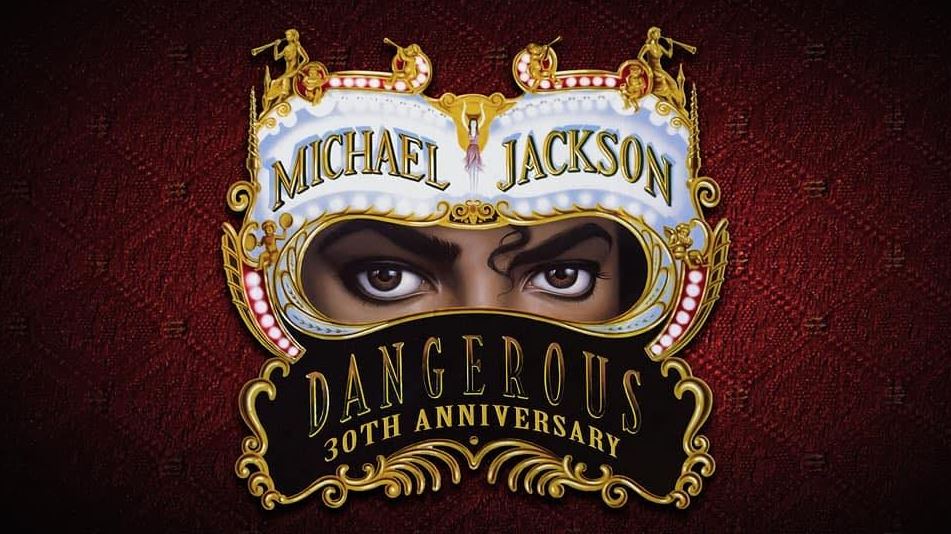
At the American Music Awards in 1993, “Dangerous” won Favorite Pop/Rock Album, and “Remember the Time” won Favorite Soul/R&B Single, underscoring the album’s wide-ranging appeal across different musical genres and audiences. Jackson also received the inaugural International Artist Award at the same ceremony, recognizing his global influence and contributions to music.
The album’s success and acclaim were mirrored by its impact on subsequent music trends, particularly in the integration of socially conscious themes into mainstream pop and R&B music. Jackson’s work on “Dangerous” inspired a generation of artists to tackle more serious issues in their music, blending pop sensibilities with deeper messages, a trend that continues to resonate in the industry today.
In summary, “Dangerous” stands as a testament to Michael Jackson’s artistic vision and his ability to navigate the evolving landscape of the music industry. Its singles propelled the album to monumental success, while its critical reception and awards highlighted Jackson’s creative achievements. The album not only marked a significant point in Jackson’s career but also influenced the direction of pop music in the years that followed.
| Aspect | Details |
|---|---|
| Grammy Nominations (1993) | Best Pop Vocal Performance for “Black or White” and Best R&B Vocal Performance for “Jam.” Won Best Engineered Album, Non-Classical. |
| Sales Milestones | Over 32 million copies sold worldwide; one of the best-selling albums of all time. Certified 8x Platinum by the RIAA by August 2018. |
| American Music Awards (1993) | Won Favorite Pop/Rock Album and Favorite Soul/R&B Single for “Remember the Time.” Jackson received the inaugural International Artist Award. |
| Cultural Impact | Influenced the integration of socially conscious themes into mainstream pop and R&B music, inspiring artists to tackle serious issues. |
| Legacy | “Dangerous” stands as a testament to Jackson’s artistic vision, impacting pop music direction and achieving monumental success and critical acclaim. |
Legacy and Influence
Michael Jackson’s “Dangerous” album has left an indelible mark on the music industry, influencing future music productions and inspiring countless artists. The album’s fusion of new jack swing, pop, R&B, and elements of rock and industrial music showcased Jackson’s innovative approach to music-making. This genre-blending technique set a new standard for pop albums, encouraging artists to experiment with diverse musical styles and complex thematic content.
“Dangerous” was pivotal in popularizing new jack swing, a genre that combined the rhythms of hip-hop with R&B melodies. Teddy Riley, the pioneer of new jack swing, co-produced several tracks on the album, bringing a fresh, urban sound to Jackson’s music. This influence is evident in the works of later artists like Usher, Justin Timberlake, and Beyoncé, who have incorporated similar stylistic elements in their music. The album’s production techniques, such as the use of digital samplers, drum machines, and unconventional sound effects, have become standard practices in the industry.
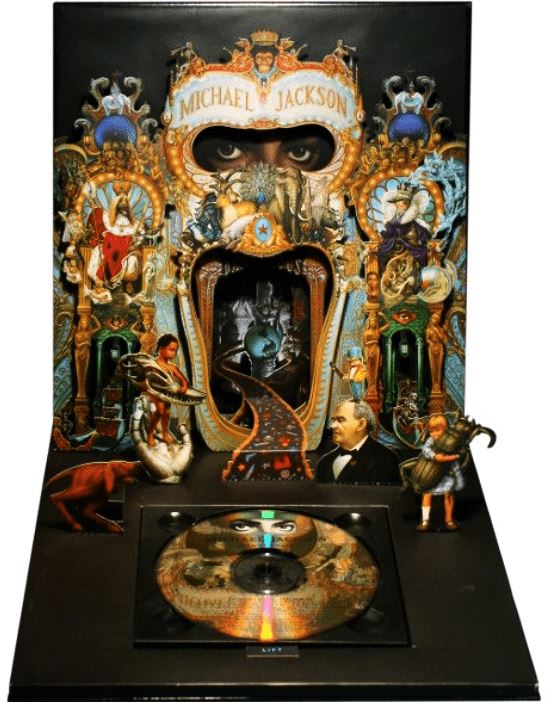
Over the years, critics have reappraised “Dangerous,” recognizing it as a significant artistic achievement in Jackson’s career. Initially, the album received mixed reviews, with some critics struggling to appreciate its departure from Jackson’s previous work with Quincy Jones. However, as the music landscape evolved, the innovative aspects of “Dangerous” became more apparent. Critics now laud the album for its ambitious scope, thematic depth, and technical prowess. It is often cited as one of Jackson’s most adventurous and forward-thinking projects, demonstrating his ability to push the boundaries of pop music.
“Dangerous” holds a prominent place in music history, not only for its commercial success but also for its cultural impact. The album’s socially conscious themes, such as racial harmony and global awareness, resonated with audiences worldwide. Tracks like “Heal the World” and “Black or White” became anthems for social change, inspiring a generation of musicians to address important issues through their music.
Michael Jackson’s influence on the music industry is continually reflected through “Dangerous.” The album’s success demonstrated the potential for pop music to address serious topics while maintaining commercial appeal. Jackson’s meticulous production techniques and innovative use of technology set a new benchmark for future artists and producers. His ability to blend different genres seamlessly has become a hallmark of contemporary pop music.
| Aspect | Details |
|---|---|
| Innovative Music Production | Fused new jack swing, pop, R&B, rock, and industrial music, setting a new standard for genre blending in pop albums. |
| Impact on New Jack Swing | Pivotal in popularizing the genre through Teddy Riley’s co-production, influencing artists like Usher, Justin Timberlake, and Beyoncé. |
| Production Techniques | Use of digital samplers, drum machines, and unconventional sound effects, setting industry standards for modern music production. |
| Critical Reappraisal | Initially mixed reviews, now recognized as a significant artistic achievement and one of Jackson’s most adventurous projects. |
| Cultural Impact | Socially conscious themes like racial harmony and global awareness resonated widely, inspiring musicians to tackle important societal issues. |
| Legacy in Music History | Noted for its ambitious scope, thematic depth, and technical prowess, “Dangerous” continues to influence and inspire future music productions and artists. |
“Dangerous” significantly impacted Michael Jackson’s career, showcasing his evolution as an artist and solidifying his status as a musical innovator. The album marked a departure from his previous collaborations with Quincy Jones, highlighting Jackson’s desire for creative independence and his willingness to explore new musical territories. Its commercial success, critical acclaim, and enduring popularity underscore its significance in Jackson’s discography.
The thematic and musical innovations introduced in “Dangerous” continue to influence the music industry. Jackson’s incorporation of socially conscious themes into mainstream pop set a precedent for future artists, demonstrating that pop music could be both entertaining and thought-provoking. The album’s blend of genres and advanced production techniques paved the way for modern pop music, encouraging artists to experiment and push creative boundaries.
“Dangerous” remains a testament to Michael Jackson’s visionary artistry and his ability to shape the direction of popular music. Its legacy endures not only through its lasting impact on listeners and artists but also as a milestone in the evolution of pop music. As critics and fans continue to revisit the album, its significance in music history becomes even more apparent, reaffirming Michael Jackson’s enduring influence on the world of music.
